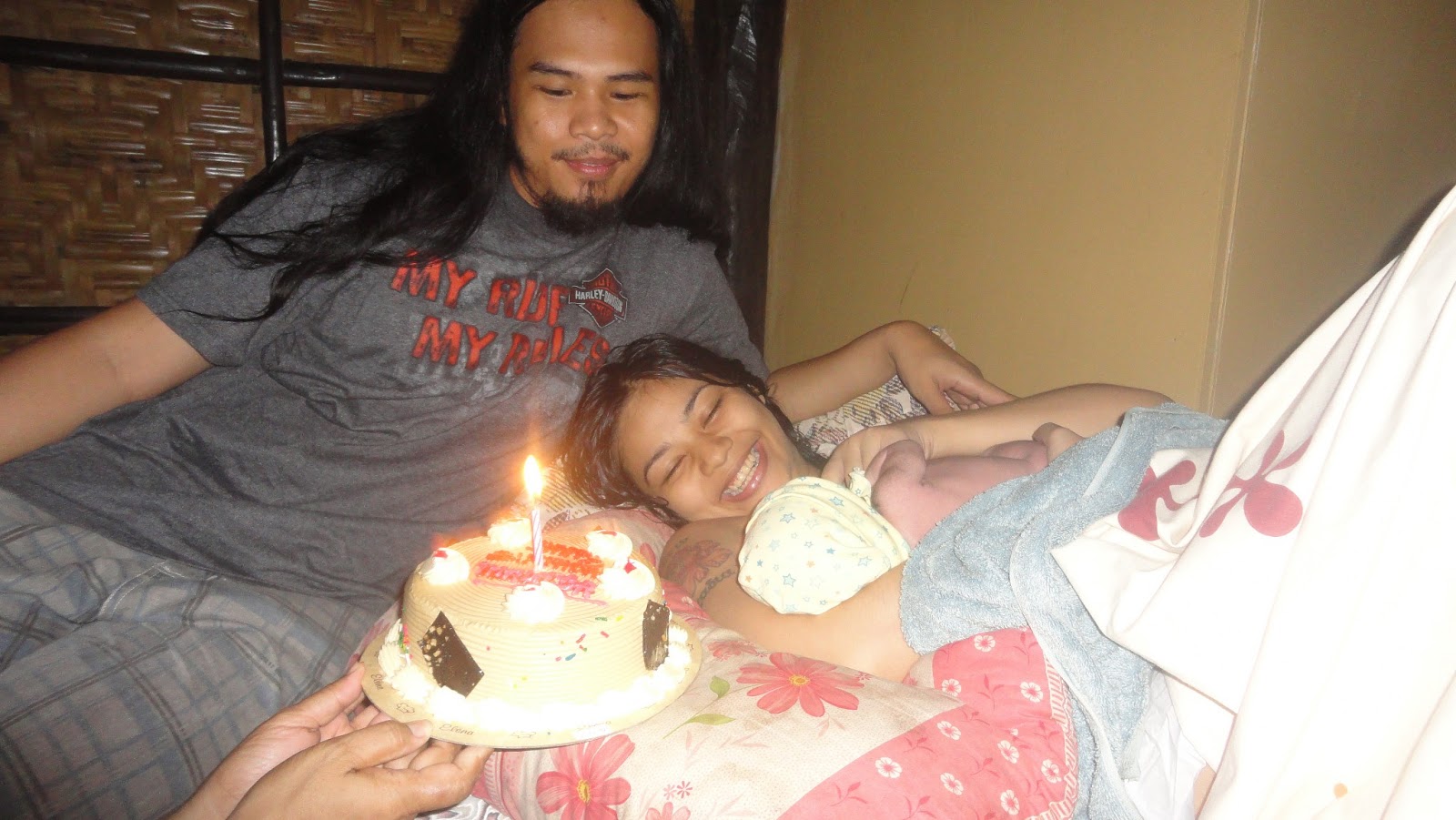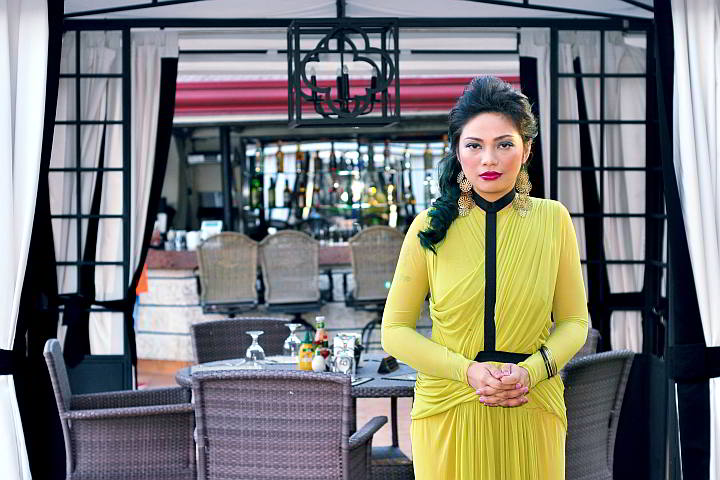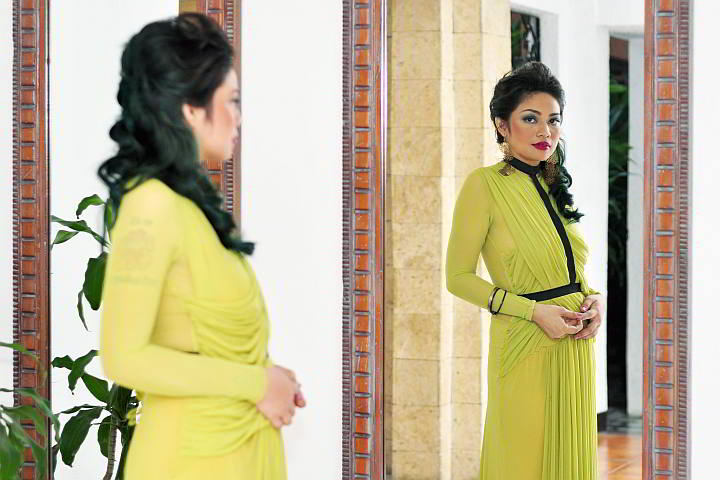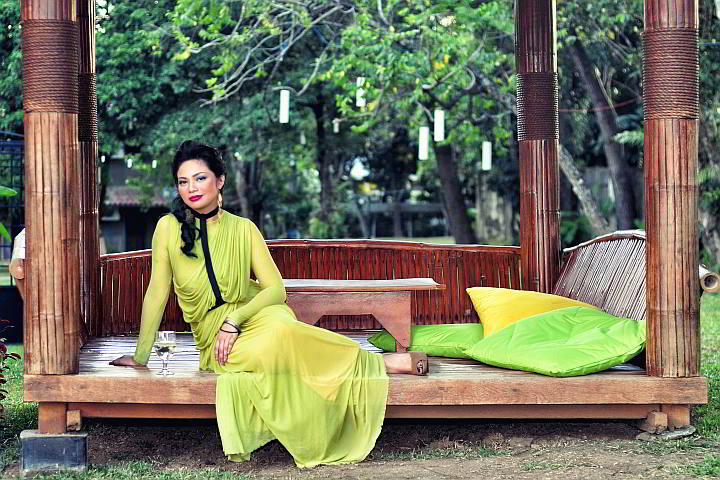Filmmaker Ara Chawdhury is one brave woman. How often do you hear about someone delivering her baby at home and in an improvised pool? Not only that—this young mother had lotus birth, or umbilical non-severance, which is the practice of leaving the umbilical cord uncut at childbirth so that the baby is attached to the placenta until the cord naturally separates from the umbilicus a few days later.
But even for her nonconformist ways, this beauty from Biliran is a trendsetter. She is a founding member of the UP Otakufest, Cebu’s first collegiate cosplay and hobbies event.
And recently, Ara won Best Director in the Sinulog Film Festival 2015 for the short film, “Operation Prutas.” The short film also won the Best Editing, Best Supporting Actress (for Chai Fonacier), Best Direction and Best Picture awards.
Here, read about Ara’s passions.
How did your love for cinema start?
It began with my love for theater, for the stage—I like the costumes, the play, how people interact in make-believe scenarios. But even before that, I loved cartoons. I grew up watching Looney Tunes and Merrie Melodies, kay mao ray ipatan-aw sa amo dad because he considered other shows on TV rubbish… we’d only hear of noontime shows from the maids. So growing up, I had a very specific vision of what I wanted to see on screen. And then theater came …
That’s why you took up Mass Communication in UP?
Yes. Initially I wanted to become a writer. The Mass-Com program in UP has three tracks: we were trained in print, video and radio. My professor advised me to focus on one thing—I was a master of all trades so I couldn’t decide on what I really wanted. The only medium that would integrate all these was film. It seemed natural that I would get into that.
How did you officially get into it?
My adviser told me in 2009 that my thesis should be a short film. Back then wala pay mga film schools… ang IAFT pa lang, and I already acted in some so I had a feel of production work. Through that experience, I saw how difficult it was. I told myself I had to start from the ground level.
Was that your turning point?
You mean my fool’s jump? (laughs) Yes. Of course, I wasn’t able to finish my thesis (the title of the short film I was working on was “Bida Complex”) because of so many things. I saw first-hand how difficult it is to put together a film. So, needless to say, I wasn’t able to graduate. I tried going back to school, but maglisud nako og concentrate because I was engrossed with production. Ang nakapa-ambak jud nako was “Damgo ni Eleuteria.” At that time I was already hanging out with Panumduman Productions, and final exams in UP was in October—dungan jud. So I questioned myself: If the reason to go to school was to get a job that you always wanted, and here comes the chance nga nanuktok… So I stopped attending class and joined the productions. And the next week we went to Olango na. And then there was no turning back.
No regrets?
It was the perfect experience for me: there was chaos, naa tanan. Basta mao na na sya. Remton Zuasola is the sort of director that builds on fire. I have experienced starving artist mode… there were lean times, no rakets. We have a very sad industry. It only looks glamorous but it is very sad because walay funding. I experienced being homeless for a while, I stayed at friends’ houses. I realized that I dug myself into a grave and the only way to get out is to stick to my guns. And that’s what I did.
So you found your true passion. And then found true love?
We met because I auditioned for him. I began as an actress baya. They posted for ”Biernes, Biernes.” It all happened in one day. It was called The Exquisite Corpse Project. It’s a series of shorts: one director will pick up where the previous short left off. Our story was the last one—it was a lesbian story. He thought I was an actual lesbian kay ako lihok mura og laki gyud daw. We just met up to talk about the project. Soon we found out that we have many things in common: pareha me ganahan nga banda, books, films.
I reminded him daw of his younger self. The transition from really good friends to romance happened somewhere along the way. A long time after. Siguro, two years mi as friends. Then we made “Tam-is,” the first film nako nga nahuman. Sige me kuyog ato nga time. We shot in his house. He helped me put it together. Have you heard of the term “casting couch”? Mao to siya.
And then you had a baby.
Yes, we had a baby and that was when we decided nga dili na mag sikreto-sikreto. It was a bit awkward man gud at first, kay people think: Ah, siya ang producer slash girlfriend sa director. So, maka ana sila… that is the only thing, the only reason why he is dealing with you. I didn’t like the stigma.
How did you transcend it?
It’s an ongoing thing. I don’t think we’ll ever transcend it. We cannot please everybody. So ignore it nalang, kevs.
Let’s talk about your much-discussed water birth. What inspired you to do it?
Way before I had any romantic inclinations towards anyone, I saw Orgasmic Labor on YouTube and it altered my perception about childbirth. Since bata pa ko, I was always bombarded with information na sakit manganak. Mahadlok ko manganak pero ganahan gyud ko maka baby kay ganahan man ko ug bata. But when I saw that video, it changed my mind. Dili diay kinahanglan sakit manganak. In fact, it can even be orgasmic… which is unheard of. In the movies, you see all these women characters giving birth and they are always screaming, and you hear: “She’s gonna die!” See how media can be such an influence? My own grandma died after giving birth to her eighth child. But when I saw the video, I told myself that I am going to do that when the time comes. It’s being practiced in Eastern Europe, in lakes, in cold water, for a long time now.
So you did your own research considering that it’s not being practiced here in the Philippines?
Yes, a lot! I saw a documentary called “The Business of Being Born.” Authorities in childbearing argue that at the very beginning, the newborn is loaded with guilt nga gipasakitan nila ilang mama when it is supposedly a joyful experience. And then if you look at more developed countries, taas ilang cases of Caesarean section. Mindset was that it was more convenient, perceived to be less painful. Plus the medications for mom and child … which made me question why back in the day of Adam and Eve, there was no Caesarian. Monkeys give birth unassisted. And I’m a very DIY person, so I knew I was going to do it. But there was no doctor in Cebu who was willing to do it. So I went back to my hometown in Biliran, consulted an unorthodox ob-gyn who has had a workshop but never tried it and was willing. So we prepared an inflatable pool, disinfected it, and went for it.
Did you document the process?
Yes.
Describe the pain on a scale of 1 to 10?
15! But I know I was strong enough to handle it. And it was a sacred and joyful experience.

Ara after giving birth (Grabbed Photo from Ara’s blog)
Let’s talk about childbirth and the art of filmmaking.
Very much alike. There are so many preparations, so many birthing pains.
What is your dream filmproject?
There’s a love story I’ve been writing forever about a student activist who falls in love with the supposed enemy. It’s called “I Hate America.”
Who are your Top 5 favorite filmmakers.
Five lang? John Torres. I loved how “Todo Todo Teros” and “Ang Ninanais” reminds me of hurts long buried. His films are experimental, but there is truth in them. Darren Aronofsky. I love that he touches world mythology with both respect for its core truths and irreverence for the frills and trifles.
Examples are “Noah” and “The Fountain.” Paul Thomas Anderson, for the impeccable world building, camera movements, and interesting characters, with more lurking under the surface than just their lines. I watch his stuff over and over again and never tire of it.
Examples, “Magnolia,” “Boogie Nights,” “Punch-Drunk Love.” Charlie Kaufman, my favorite screenwriter, goes where writers don’t usually dare go with film. Examples, “Eternal Sunshine of the Spotless Mind,” “Adaptation,” “Being John Malkovich.” Buang siya in the best way. Special mention… The late great Eiko Ishioka, who was a costume designer for films. I’m all for spectacle, and though not a director per se, her work for “Dracula“,” “The Cell,” and “The Fall” have burned themselves in my memory. Which is what great films should do to you.
What can you say about the state of the filmmaking industry in the country?
We are at a point where people can make things that have never been done before. The technology is affordable, information is online, and everyone can be a filmmaker. The downside to the Internet though is piracy and people preferring to watch films at home and online. Even the studios are afraid to fund off-beat projects because blockbuster trends are veering towards star-studded circus rides. On the other hand, a lot of films are being made outside the studio system, and filmmakers are learning to crowd source and screen outside theaters. Regional films are finding a voice and a presence in national consciousness that could only be dreamt of before.
Why do you think we haven’t been nominated in the Oscars Best Foreign Language category?
Bad sound. It’s one of the most important elements of film. In the Philippines, we make films fast and cheap. Studios won’t shell out any more money for proper sound if audiences don’t hear the difference. But international film festival directors do.
What is your biggest lament about indie filmmaking?
People perceive indie films as cheap productions with bad actors and huge plot holes. So when something a little bit more polished rises above, people who expected worse are quick to heap praise. “Independent” used to mean the film took more risks that studio bred stuff couldn’t pursue. It’s hard to get people to watch when they’re prejudiced. It’s hard to get funding when you don’t have an audience.
As a mother, how do you plan to raise your kid?
With respect to his personhood and individuality, no matter how old (or young) he is. We plan to homeschool him.
Do you think women these days are more empowered?
It would seem so. We definitely have the Internet to thank for more readily available information about gender roles and possible avenues for women to speak out. But women also cyberbully each other instead of supporting, censor themselves because they “feminism” isn’t “sexy”, and are being objectified, and objectify themselves on a grand scale. Gender equality is still a huge work in progress, but we’re getting there.
What’s the biggest lesson motherhood taught you?
Compassion. People are the most helpless at birth, and the most ill- equipped to compensate. If you can wake up at 3 a.m. with 30 minutes of sleep to suckle a newborn baby, you can learn to empathize with the most difficult people.
What is the secret in keeping your man that you can share with the women out there?
First, make sure you’re with someone who respects you and actually wants to be with you. Next, maintain good communication, radical honesty, and accept the possibility that nothing lasts forever. When you act like your life will end when you lose the person, you become clingy and possessive. People are not possessions.
When can you say that we have reached gender equality?
When we start seeing gender as
a spectrum instead of two categories. When we stop being so hung up on sex. When we learn how to use unisex bathrooms with respect and dignity.
PHOTOS
Dr. Francis Xavier Solis
LOCALE
Montebello Villa Hotel
HAIR AND MAKEUP
Bobbie Albert
GOWN
Hanz Coquilla





